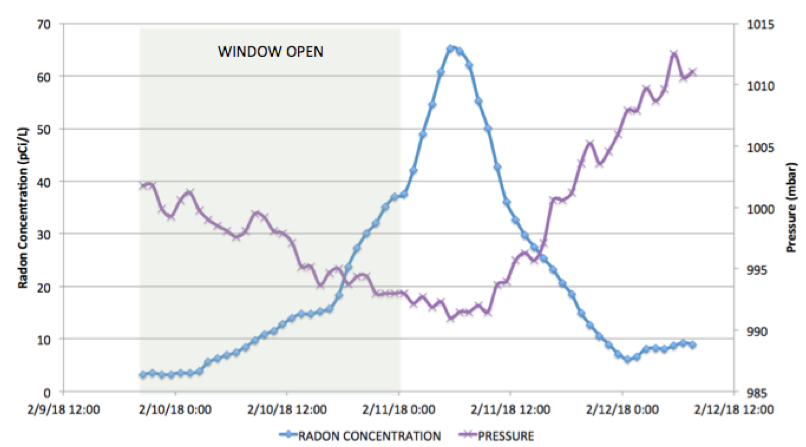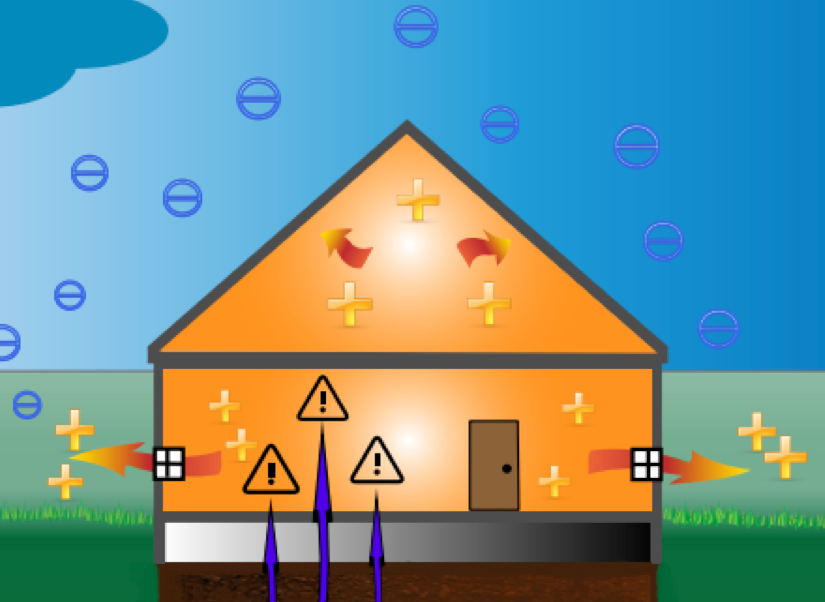E3 is currently conducting a neighborhood radon study in different areas across Nashville to get a sense of the variation within neighborhoods. The age of the homes varied, as did their foundation types. Some of those who have participated so far are E3 clients, while others are not. Our initial findings are, well, interesting to say the least. Although we like to nerd out on data and techie stuff, we thought you might actually find the results interesting too.
Opening a window may do more harm than good, depending on the weather
Usually, homeowners are instructed to keep the windows closed during a radon test, but since rules are meant to be broken, we asked one homeowner to open a window during a second test of her home to see just what would happen. In the first test (with the windows closed), levels averaged 10.5 pCi/L in the master bedroom, which is above the EPA’s recommended level of 4.0 pCi/L. So, we asked ourselves, would leaving the bedroom window open lesson the homeowner’s exposure or would the stack effect cause levels to increase?
During the second test, the bedroom window was left open from about 8:00 PM on February 9 until 11:59 PM on February 10. Surprisingly, the open window caused a huge spike in concentration, from 3 pCi/L to over 60 pCi/L in just 30 hours.

We see a strong correlation between radon levels and pressure, and this case was no different. While this test was taking place, a low pressure weather system brought rainy weather to the area, which emphasized the pressure difference between indoor and outdoor. Opening the window exhausted the high pressure air from inside to the outdoors and increased the stack-effect. This change in pressure pulled radon up from the unsealed crawlspace as it took the place of the air seeping out the window.

The golden nugget: Although it is important to standardize testing procedures, a sealed house may not correlate to the worst-case-scenario. Opening a window might actually increase radon levels as a result of the stack-effect. Although there are many variables that come into play, keeping your windows closed during rainy winter days may help minimize your radon exposure.
Other findings from this study:
- Your neighbor’s radon level is no indication of what your levels are. Results varied from house to house, with little consistency between neighbors. So, you can’t assume your levels are low just because your neighbor’s are. Some factors that affect levels include: leakiness of your home, foundation type, condition of the foundation, age of your home, soil type beneath the foundation, and geographic location.
- You should periodically check your radon levels, even if you have a mitigation system. Some homes with a mitigation system had levels above the EPA’s recommended maximum of 4.0 pCi/L. Radon levels can change over time; it is best to test at least twice a year.
- Long term testing is the best indicator of average exposure. We find that radon levels change dramatically with weather patterns. Typically, high pressure systems cause indoor radon levels to rise while low pressure systems cause them to fall. Capturing a long-term average (30 days or more) provides a better estimate of your exposure.









